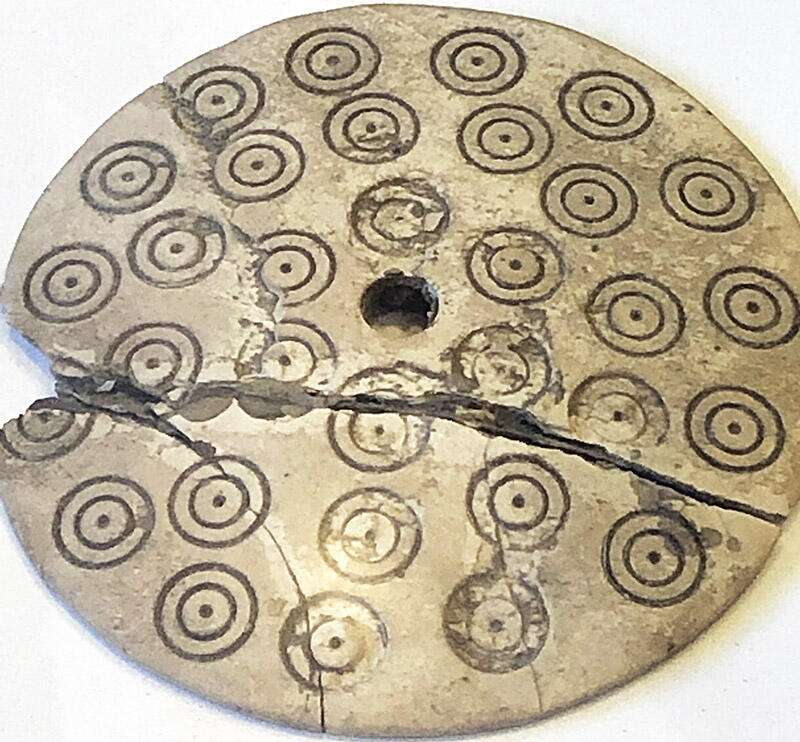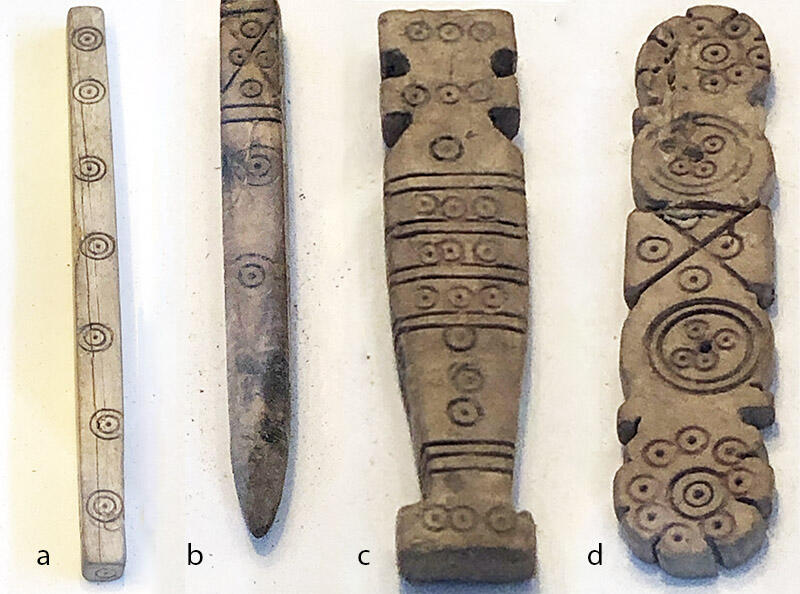April 27th, 2020
Was this disc (Image 1) from Mohenjo-daro at the National Museum of Pakistan in Karachi used for counting? The circles with dots in the middle are identical to those found on other ivory objects from Mohenjo-daro thought to have been used as counters (2). Merchants or officials might have used these to keep track of goods, running their thumbs over the dots to track quantities. Or could there have been some other purpose?
Let us look at the counting argument. The disc seems to have three circles of dots, of 15, 11 and 6 dots. These add up to 32, which is divisible by 8. We tend to think that Indus people, used a base eight system to count with, which corresponds to the sum of fingers on two hands, using the thumb to count with, as people still do. Yet looking at the other counters (2), only the final one (d) seems to largely have groups of 4 and 8 dots. The first object (a) has 7 dots, and is similar to a rectangular ivory object with 4 dots on it from Nausharo that might have been used as a counter or dice (Fig. 113, in Kenoyer, Ancient Cities of the Indus Valley Civilization, p. 214). The second (b) has a set of four dots on top, then what seem to be 3 dots (the bottom one is obscured but the dot and part of a circle is visible). The third counter (c) has 7 dots at the top, and then is broken into 5 groups of 3, which corresponds nicely to the 15 in the circular disc. Indeed, perhaps in the circular disc (1) it is not 6 but 7 dots in the innermost circle, for a grand total of 35? Neither do any of these numbers seem to fit a base 10 or decimal system that the Harappans also seem to have used.
Note too that the same dots are found on an ivory comb far away in Gonur Depe, Turkmenistan. Could they have had a purely decorative purpose?
Alternately, the disc and some of these counters were not used for business but for prayer, and helped their owners memorize or recite specific verses, much like rosaries today. Mark Kenoyer writes, of objects similar to those in the second image and specifically (c), that "bone and ivory counters with circles and lines, carved in ways that do not correspond to dice, may have been used for predicting the future" (Ancient Cities, p. 120).




